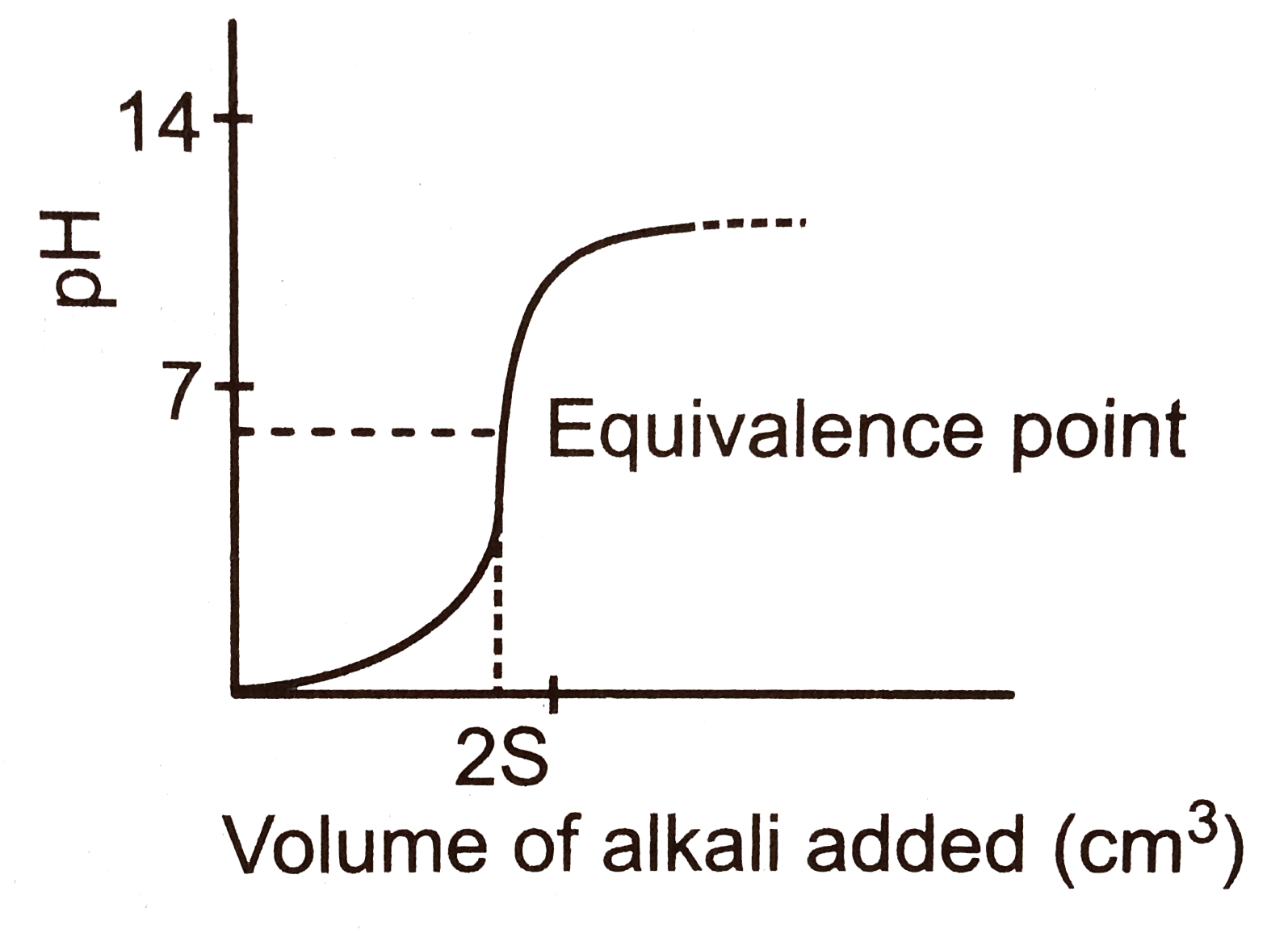Given, CH3COOH(aq)→CH3COO−(aq)+H+(aq)
ΔH∘rxn=0.004 kcal gm−1
Enthalpy change when 1 mole of Ba(OH)2, a strong base, is completely neutralized by CH3COOH(aq) is (ΔH∘ of neutralization of strong acid with strong base is=−13.7 kcal mol−1)
−27.46kcal/mol
27.46kcal/mol
−26.92kcal/mol
−13.46kcal/mol
The correct Answer is:C
To solve the problem, we need to calculate the enthalpy change when 1 mole of barium hydroxide (Ba(OH)₂) is completely neutralized by acetic acid (CH₃COOH). We will follow these steps:
Step 1: Understand the dissociation of acetic acid
The dissociation of acetic acid is given by the equation:
CH3COOH(aq)→CH3COO−(aq)+H+(aq)
The enthalpy change for this reaction is given as:
ΔHrxn=0.004kcal/g
Step 2: Calculate the enthalpy change for 1 mole of acetic acid
The molecular mass of acetic acid (CH₃COOH) is approximately 60 g/mol. Therefore, the enthalpy change for 1 mole of acetic acid can be calculated as:
ΔH1 mole=0.004kcal/g×60g=0.24kcal
Step 3: Write the neutralization reaction
The neutralization reaction between barium hydroxide and acetic acid can be represented as:
Ba(OH)2+2CH3COOH→Ba(CH3COO)2+2H2O
Step 4: Use the enthalpy of neutralization for strong acid and strong base
The enthalpy change of neutralization for a strong acid with a strong base is given as:
ΔHneutralization=−13.7kcal/mol
Since 2 moles of acetic acid are used in the reaction, we need to consider the enthalpy change for both moles.
Step 5: Calculate the total enthalpy change for the neutralization
The total enthalpy change for the neutralization reaction can be calculated as follows:
ΔHtotal=ΔHneutralization+2×ΔHdissociation
Where:
- ΔHdissociation=0.24kcal (for 1 mole of acetic acid)
Thus, for 2 moles:
ΔHdissociation (2 moles)=2×0.24kcal=0.48kcal
Now substituting the values:
ΔHtotal=−13.7kcal+0.48kcal=−13.22kcal
Final Answer
The enthalpy change when 1 mole of Ba(OH)₂ is completely neutralized by CH₃COOH is approximately:
ΔHtotal≈−13.22kcal/mol
---
The dissociation of acetic acid is given by the equation:
CH3COOH(aq)→CH3COO−(aq)+H+(aq)
The enthalpy change for this reaction is given as:
ΔHrxn=0.004kcal/g
The molecular mass of acetic acid (CH₃COOH) is approximately 60 g/mol. Therefore, the enthalpy change for 1 mole of acetic acid can be calculated as:
ΔH1 mole=0.004kcal/g×60g=0.24kcal
The neutralization reaction between barium hydroxide and acetic acid can be represented as:
Ba(OH)2+2CH3COOH→Ba(CH3COO)2+2H2O
The enthalpy change of neutralization for a strong acid with a strong base is given as:
ΔHneutralization=−13.7kcal/mol
Since 2 moles of acetic acid are used in the reaction, we need to consider the enthalpy change for both moles.
The total enthalpy change for the neutralization reaction can be calculated as follows:
ΔHtotal=ΔHneutralization+2×ΔHdissociation
Where:
- ΔHdissociation=0.24kcal (for 1 mole of acetic acid)
ΔHdissociation (2 moles)=2×0.24kcal=0.48kcal
ΔHtotal=−13.7kcal+0.48kcal=−13.22kcal
The enthalpy change when 1 mole of Ba(OH)₂ is completely neutralized by CH₃COOH is approximately:
ΔHtotal≈−13.22kcal/mol
Similar Questions
Calculate the enthalpy change when 50mL of 0.01MCa(OH)2 reacts with 25mL of 0.01MHCI. Given that ΔHΘ neutralisaiton of strong acid and string base is 140kcalmol−1
View SolutionEnthalpy of neutralisation of acetic acid by NaOH is −50.6kJmol−1. Calculate ΔH for ionisation of CH3COOH. Given. The heat of neutralisation of a strong acid with a strong base is −55.9kJmol−1.
View Solution
Knowledge Check
- Question 1 - Select One
The enthalpy of neutralisation of NH4OH and CH3COOH is -10.5 kcal mol−1 and enthalpy of neutralisation of CH3COOH with strong base is -12.5 kcal mol−1. The enthalpy of ionisation of NH4OH will be
A4.0 kcal mol−1B3.0 kcal mol−1C2.0 kcal mol−1D3.2 kcal mol−1
Enthalpy of neutralisation of acetic acid by NaOh is −50.6kJmol−1. Calculate ΔH for ionisation of CH3COOH. Given. The heat of neutralisation of a strong acid with a strong base is −55.9kJmol−1.
View SolutionIf CH2COOH+OH−→CH3COO−+H2O+q1
H++OH−→H2O+q2
then the enthalpy change for the equal toView SolutionWhen strong base (NaOH) is added to the weak (acid , CH3COOH) , then dissociation of acetic acid increase, this effect is known as
View SolutionMatch the following
Column-IColumn-II(Enthalpy change in kcal)(Neutralisation)(A)<13.7 kcal(p)HCI(1 mol)+NaOH(1 mol)(B)=13.7 kcal(q)HF(1 mol)+NaOH(1 mol)(C)gt 13.7 kcal(r)NH4OH(1 mol)+HCI(1 mol)(D)= 27.4 kcal(s)NaOH(2 mol)+H2SO4(1 mol)(t)NaOH(1 mol)+CH3COOH(1 mol)
Assume heat of neutralisation of strong acid with strong base is 13.7 kcal.View SolutionThe enthalpy of formation of H2O(l) is −285KJmol−1 and enthalpy of neutralization of a stron acid and a strong bas is −55KJmol−1. What is the enthalpy of formation of OH− ions?
View SolutionThe enthalpy of formation of H2O(l) is −285KJmol−1 and enthalpy of neutralization of a stron acid and a strong bas is −55KJmol−1. What is the enthalpy of formation of OH− ions?
View Solution
The graph represents the titration curve for :
a.Strong acid and strong base
b.Strong acid and weak base
c.Weak acid and strong base
d.Weak acid and weak baseView Solution

